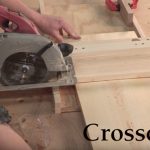We may receive a commission when you use our affiliate links. However, this does not impact our recommendations.
 by Megan Fitzpatrick
by Megan Fitzpatrick
pg. 6
On Instagram recently, I posted the picture below – a wooden coffin smoother in someone else’s shop. The tool – a handplane at rest – was on its side. It got many comments – both for and against.
I’ve heard several rationalizations for placing a plane on its side:
1) It protects the iron. You won’t dull or nick the blade by accidentally pushing it into the benchtop or into or across stuff on your benchtop, such as metal filings or a piece of sandpaper (or another tool). (Adherents to this argument presumably always place chisels bevel down for the same reasons.)
2) It protects the benchtop. You won’t gouge your bench by accidentally pushing the plane across it.
3) It lowers the plane’s center of gravity on the bench, making it (slightly) less likely that you’ll hit it accidentally and knock it to the floor.
4) My shop teacher/woodworking mentor said to.
There are also a number of good reasons to set a not-in-use plane on its sole.
From the December 2016 issue, #229

Here are some supplies and tools we find essential in our everyday work around the shop. We may receive a commission from sales referred by our links; however, we have carefully selected these products for their usefulness and quality.









